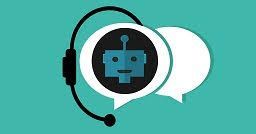

Make microlearning more effective by using chatbots
Technological progress has opened the door to new approaches that can be used in microlearning: chatbots. Let's find out how chatbots can make online training even more versatile and effective.
Make microlearning more effective by using chatbots
Technological progress has opened the door to new approaches that can be used in microlearning: chatbots. Let's find out how chatbots can make online training even more versatile and effective.
When it comes to microlearning, 90% of people associate this teaching methodology exclusively with the video format.
However, technological progress has opened the door to new solutions that can be used in microlearning, one of which is chatbots.
What are chatbots
The chatbot is a software designed to simulate a conversation with a human being. Chatbots are written to, talked to, and asked for information and respond in real time.
The bot starts from a set of predefined rules, but thanks to machine learning (i.e. the ability of machines to learn without having been previously programmed) it improves over time the management of its activities.
The chatbot, in fact, continuously learns from users' questions, becoming more and more precise, versatile and fast in its answers.
The most famous chatbots are the so-called " virtual assistants" (Siri, Alexa, Google Assistant, Cortana, etc.), but the fields of application of this technology are varied: from after-sales assistance to purchase guide, from FAQ to eLearning.
The use of chatbots for training
Contrary to popular belief, chatbots can do much more than just answer standard or preset questions. They allow you to engage users in a meaningful conversation and this can have multiple application scenarios.
For example, chatbots can be incorporated into eLearning courses to converse, train and even evaluate students. Through chatbots it is therefore possible to create information and training pills in an easily updatable question and answer format, which allows you to change content frequently.
Each student learns and absorbs things at a different pace and requires a specific teaching methodology. Consequently, one of the most powerful advantages of being taught by a chatbot is the extreme flexibility of this system, i.e. its ability to adapt to the specific needs and requirements of each student.
Access to information and training content via chatbot makes the learning experience interactive and leaves employees in control of their training: the student can ask a question and get a short answer when needed, even during the workflow.
In this way, the training becomes more effective because it is the students themselves who reveal their training needs.
The application scenarios of chatbot in training are varied. For example, they can be used in sales training, to train the seller in all situations that may arise during the actual conversation with the potential customer.
The bot could then respond to the seller's statements and comments, allowing him to learn how to handle all possible objections to the product or service it offers, even before entering the actual scenario.
Chatbots within the workflow
Allowing employees to have access to a chatbot means having the ability to move training within the workflow. In this way, employees can use the chatbot as their personal tutor. This approach offers the perspective of continuous learning and personalized support.
Having a bot in the workflow allows employees to have the information and training they need to do their work when and where they need it, without moving them away from the workstation.
Learn from the chatbot
Finally, the chatbot is not just about answering questions and holding conversations. It can record and analyze interaction data to see what is being asked and when, as well as collect information about questions that could not be answered.
From testing student behavior to monitoring student progress, chatbots provide data on what works and what doesn't and allow a critical step in the design process.
In this way, the training becomes more relevant and effective, as it is based on the demonstrable needs of the employees. That's why the real trend for 2020 in online training courses will be the use of chatbots.
Article taken from eLearningIndustry